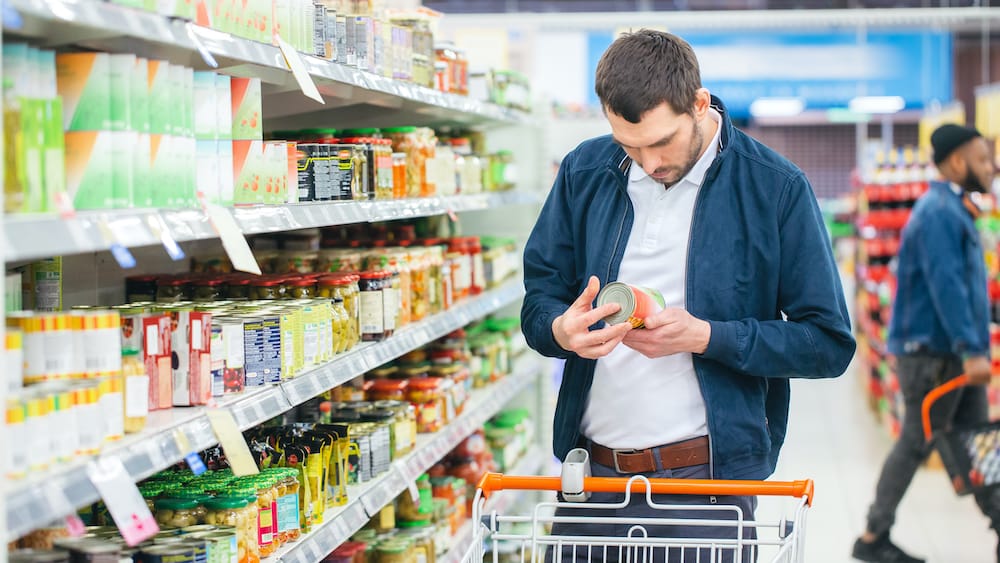The Truth Behind GMO Labeling

Non-GMO labels, like the Non-GMO Project Verified’s orange butterfly, seem trustworthy at first glance. Today, there’s a lot of confusion around food labels. A closer look reveals the truth behind non-GMO labeling. Find out what it actually means to pay extra for non-GMO foods.
What Does the Non-GMO Label Mean?
The non-GMO label means a food product contains fewer than 1% of genetically modified ingredients. Because of this, food labeled non-GMO is not legally considered GMO-free. GMOs (genetically modified organisms) are crops that have been created to produce more desirable traits. Non-GMO labels can differ in other countries.
The Non-GMO Project Verified’s label is the most common in the United States. Non-GMO Project Verified and most other United States labeling organizations define GMOs as crops developed with biotechnology.
Biotechnology allows plant breeders to take a desirable trait found in nature and transfer it from one plant to another, like the enhanced vitamin A content engineered in Golden Rice. They can also make a change to an existing trait in a plant's DNA. European non-GMO labeling requirements also define GMOs as crops produced using biotechnology.
What the non-GMO label doesn’t mean:
- The non-GMO label doesn’t always mean it’s replacing a GMO alternative. Often, companies use the non-GMO label on foods that were never developed with biotechnology. For example, there aren’t any GMO tomatoes available on supermarket shelves. So, when you see non-GMO tomatoes, remember, you’re paying a premium for a meaningless label.
- The non-GMO label doesn’t mean it's healthier. There’s scientific consensus that GMO foods are as healthy as non-GMO foods. Sometimes they're even healthier. Genetically modified foods are also safe to eat.
- The non-GMO label doesn’t mean it’s better for the environment. Several GMO crops use less water and fewer pesticides. Non-GMO alternatives often need more environmental resources.
- The non-GMO label doesn’t mean there aren’t any GMOs. Non-GMO labeled food products can contain up to 1% GMO ingredients. Non-GMO labeled livestock, poultry, beef, and seafood feed and supplements may include up to 5% GMO ingredients. Non-edible products, like lotions and cleaning supplies, can include up to 1.5% GMO ingredients.
Learn about other GMO myths here.
What are Non-GMO Food Labeling Requirements and How Are They Regulated?
The Non-GMO Project Verified is an independent organization that offers a non-GMO standard for voluntarily labeling food products. Below are the steps companies take when working with the Non-GMO Project Verified. Other organizations’ processes may vary.
- Source non-GMO ingredients. Food companies start with ingredients developed without the use of biotechnology.
- Separate GMO and non-GMO food production. Companies then segregate the non-GMO food production process from the GMO food process.
- Select a lab. The company must choose a lab to verify that it complies with the Non-GMO Project Verified’s standard. These labs are separate from the Non-GMO Project.
- Test “high-risk” ingredients. The lab conducts a series of tests throughout the supply chain, from the field to the packaging facility. In-person tests are only performed for high-risk ingredients. High-risk ingredients have common GMO-alternatives.
- Submit paperwork. For everything else, the company submits documentation that their crops are low risk. Low-risk ingredients don’t have GMO alternatives.
- Market. Promote. Advertise. After completing these steps, food companies can add the label to their food products, advertise it, and often increase prices.
- Repeat. Companies only continue to test high-risk ingredients each year.
What is the FDA and USDA’s Stance on Non-GMO Labeling?
In the United States, the FDA and USDA do not regulate non-GMO labeling. They also do not publish a non-GMO labeling stance or standard. The FDA does, however, have a consumer-facing website to help educate the general public on the benefits and the safety of GMOs. The USDA also has a Frequently Asked Questions page on GMOs, or biotechnology as they refer to it.
GMO and Non-GMO labeling vary from country to country, so it's difficult to make sweeping generalizations about the process. While some countries do not have GMOs, in 2018, 70 countries adopted GMO - 26 countries planted them and 44 countries imported (including European countries!) The total GMO crop area of 191.7 million hectares in 2018 was grown in 26 countries, 21 developing and 5 industrial countries. Also in 2018, 23 years after the initial planting, GMO crops increased ~113-fold with an accumulated global area of 2.5 billion hectares, making them the fastest adopted crop technology in the world.
Recently, the United States government took the next step towards a GMO labeling law. In July 2016, President Barack Obama signed into law the National Bioengineered Food Disclosure Standard. This law directed the USDA to establish a label for food products made with bioengineered ingredients. Bioengineered is a term the USDA uses to refer to genetic modification.
You may start to see some products on supermarket shelves with the “bioengineered” symbol throughout 2020. However, it won’t be mandatory for companies to label products until January 1, 2022. Click here to read our guide on everything you need to know about bioengineered labels.
How Does Non-GMO Labeling Compare to Organic Labeling?
Non-GMO labels and organic labels are different. Organic is a farming system that limits or prohibits the use of certain pesticides and fertilizers and restricts the ways farmers can use their land and raise animals. U.S. organic regulations also prohibit the use of GMOs. Most non-GMO labeled products are not required to be organic.
Non-GMO labels and organic labels follow different regulations. In the U.S, the United States Department of Agriculture regulates organic labels. Organic programs vary in other countries. The Non-GMO Project Verified and other third-party organizations regulate voluntary labels without oversight from the government. Click here to learn more about the differences between organic and non-GMO.